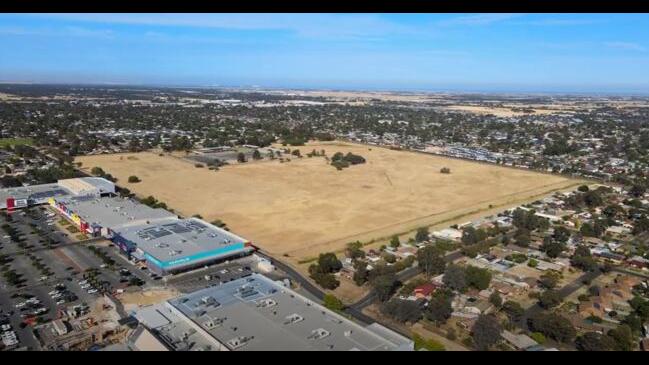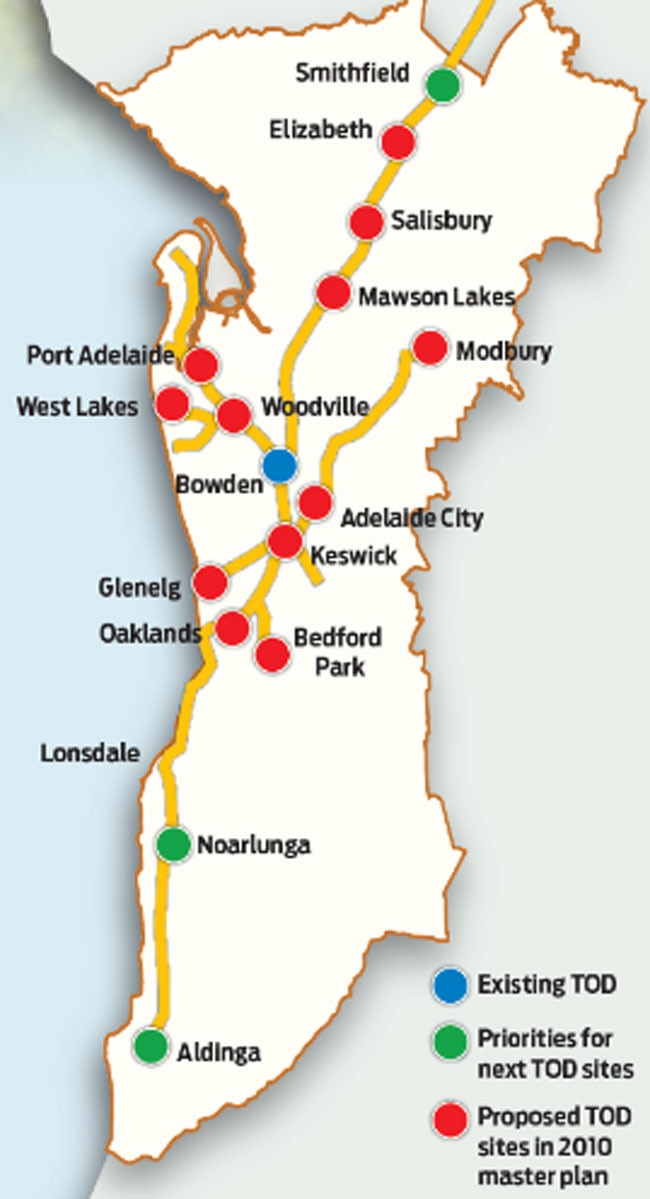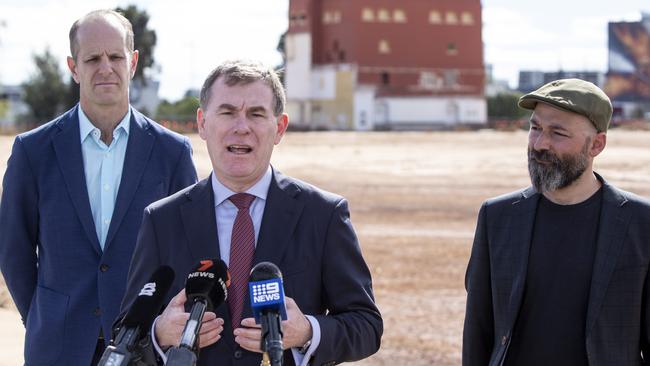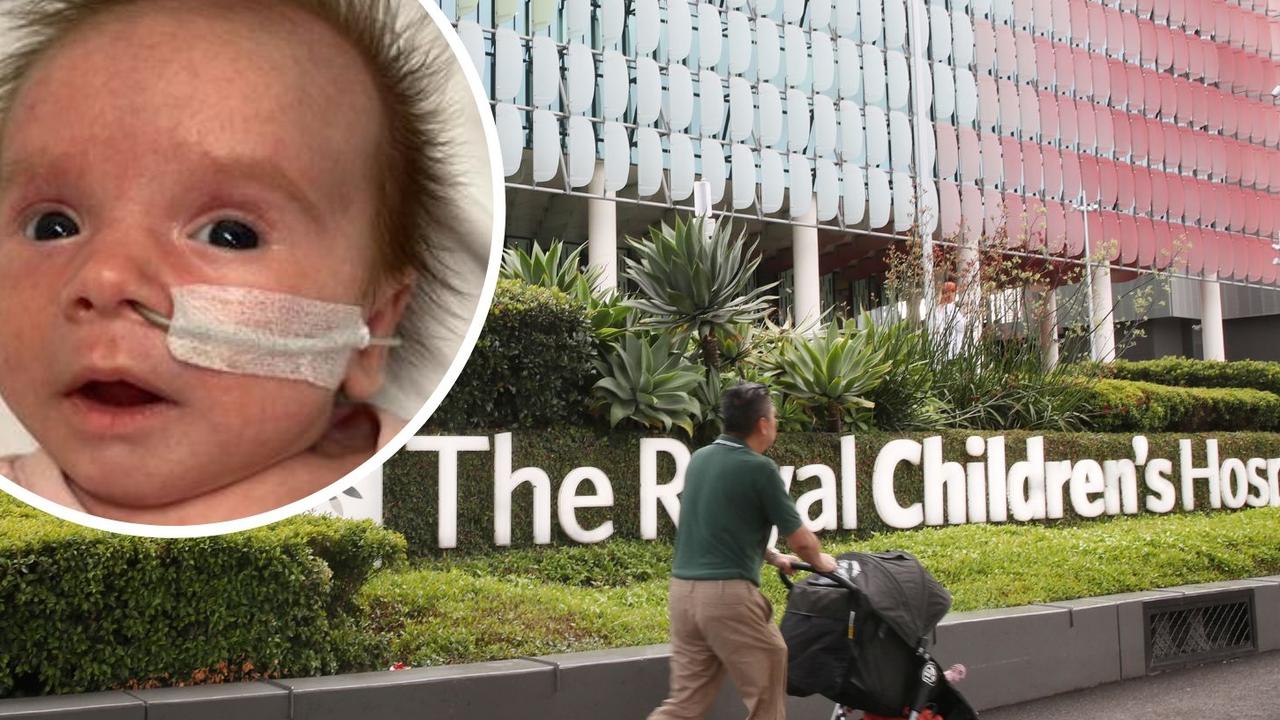Housing Minister Nick Champion wants apartment towers at public transport hubs
It is believed three suburbs could be first in line in Nick Champion’s plan to push ahead with a “farsighted” strategy for high-density apartment towers that stalled 14 years ago.

SA News
Don't miss out on the headlines from SA News. Followed categories will be added to My News.
High-density apartment towers would be spread to key parts of Adelaide’s suburbs under plans from the new “super” Housing Minister to ease the housing crisis by boosting supply.
Declaring he would kickstart stalled plans for high-rise developments at public transport hubs, Housing Minister Nick Champion insisted these apartments would ease pressure on suburban streets caused by infill development.
Mr Champion, who has moved to allow towers of up to 20 storeys at inner-eastern Glenside, pinpointed parklands fringe areas, particularly Thebarton and Hindmarsh, as ripe for high-density development.
In an interview with The Advertiser, Mr Champion said greenfield development and high-density “strategic infill” were “where you get your big hits in supply” and the government was “committed to enabling that”.
Suburban high-rise developments would be concentrated at public transport hubs, reviving 14-year-old plans for “transit-oriented developments” (TODs) by the Rann Labor government that delivered only the Bowden estate on the former Clipsal factory site.

It is understood Smithfield, Aldinga and Noarlunga are among the first areas to be targeted under Mr Champion’s renewed TODs agenda.
“I think it was, for its time, an amazingly farsighted plan and the Rann government did all that really future-looking work, Mr Champion said.
“What we didn’t do is implement it – so this is all about implementing that and there will be a renewed focus on transport-oriented developments.
“We know that this works, because particularly we can get large allotments of land where there is already public transport, and you can then sweat that infrastructure and make use of it.
“ … That’s a big opportunity for Adelaide to grow. We’ve got to make sure that we have the appropriate level of density on those transport-oriented developments and, obviously, the areas of strategic infill that are close to the city.”
Premier Peter Malinauskas handed Mr Champion a “new housing super portfolio” in an April 15 ministerial reshuffle, charging him with co-ordinating efforts to pull “every lever to build more homes”.

Mr Champion said high-rise apartments would attract buyers and renters including downsizers, young professionals and working-class people, depending on the area.
The 30-Year Plan for Greater Adelaide, released in 2010, recommended TODs at Noarlunga, Bedford Park, Oaklands, Glenelg, Keswick, Adelaide City, Bowden, Woodville, West Lakes, Port Adelaide, Modbury, Mawson Lakes, Salisbury and Elizabeth.
Signalling another housing policy shift, Mr Champion told The Advertiser there had been an unhealthy “over-reliance” on general suburban infill, or tightly built medium-density homes, placing pressure on carparking and infrastructure.
“The point I’d make is that every house in the air, every apartment in the air, is one less in a crowded suburban street,” he said.
“ … We want to get general infill right, we want to make sure it delivers better for the community. But if we’re having a functioning market, like a good market, we want to have the right amount of strategic infill, the right amount of general infill and the right amount of greenfield and getting that balance right is going to be a challenge.”

Asked about scope for high-rise residential development at major shopping centres, Mr Champion predicted these would “slowly evolve into a more mixed-use model because it makes sense to have people living where your shops are” – and near public transport.
There was scope for higher-density development along parts of the Adelaide parklands fringes, he said, pointing to plans for more than 1000 homes at Thebarton’s former West End Brewery site.
“We’ve got to look at this interaction between the edge of the boulevards and the parklands because we’ve got this great social asset. There is not a city around the world that’s designed like this and we’ve managed to be able to keep the integrity and the precious nature of it,” he said.
Asked if he would respond to developers’ demands to boost supply by releasing land outside Adelaide’s urban growth boundary, Mr Champion was noncommittal and highlighted the Greater Adelaide Regional Plan now open for consultation.
Mr Champion said regulatory barriers to converting CBD offices to homes had been removed but adapting them for sufficient carparking, disability access, natural light and other standards had been prohibitively challenging.
What it’s like to live at Plant 4 in Bowden
By Eva Blandis
Partners Amanda Lobianco, 36, and Adrian DiNino, 30, have been living in Brompton for four years and say high-density apartment towers are the solution to growing communities throughout Adelaide and giving small businesses a chance.
“It’s still got that suburban character without the busy sort of environment of being in the centre of the city,” Mr DiNino said.
Ms Lobianco said the Bowden development has provided residents with a well-rounded suburban community while also living in close proximity to the city and public transport.
“You’re close to the city, you’re kind of central, it’s very easy to get to-and-from everywhere,” she said.
“It’s kind of like a little community and Plant 4, it’s grown over the years.”
Ms Lobianco said there should be more high-density apartment towers through the suburbs in order to establish more communities.

“I think it would be good for communities to have their own little area,” she said.
Ms Lobianco said the developments also give small businesses a place to thrive.
“I think it’s great … Plant 4 is always busy, little businesses within Plant 4 have had to increase the days they’re here,” she said.
“Not having to hustle and bustle through the city to get a coffee is nice.”
Alice Brook, 35, said the Bowden development provides people with a “desirable” place to live.
“It’s desirable around here, it’s a nice space, it’s a really nice vibe?” she said.
Ms Brook said she doesn’t think similar developments in suburbs further from the city would be as successful.
“If you had Bowden in West Lakes I don’t think it would work,” she said.
“Somewhere so close to the city is a solution and an affordable solution.”
Ms Brook, who used to live in London, said developments like Bowden provide a solution to high density areas.
“I think they’re a solution, we lived in London so we’re used to small living,” she said.
“(It’s) so accessible and close to the city.”
Azra Sari, 43, and her son, have been living in Bowden for six years and have come to love the economical and community benefits.
“I just love the community here basically,” she said.
Ms Sari said having high-rise apartment buildings throughout suburban Adelaide would be an appropriate solution to the housing crisis.
“It definitely helps,” she said.
“It pushes people to have a minimalistic lifestyle which is good for the environment,” she said.
More Coverage
Originally published as Housing Minister Nick Champion wants apartment towers at public transport hubs
Read related topics:Cost of Living





